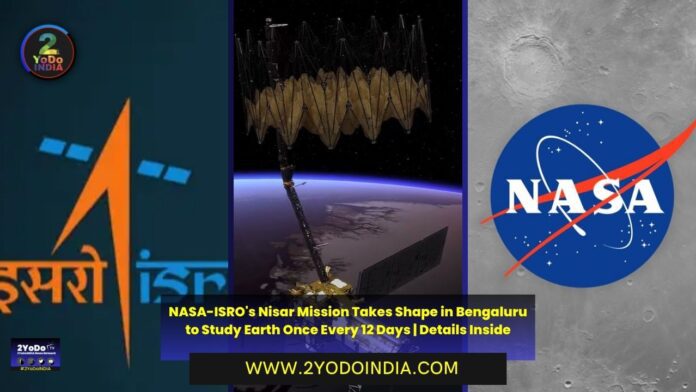Joint mission between the US and the Indian space agency, the NASA-ISRO Synthetic Aperture Radar (NISAR) is making significant progress in Bengaluru. After its arrival in India from the US, engineers at the U R Rao Satellite Centre in Bengaluru have successfully integrate two major components of the satellite to form a single spacecraft.
NISAR will observe almost every region of our planet at least once every 12 days, providing valuable insights into the dynamics of forests, wetlands, and agricultural lands, among many other aspects.
The spacecraft consists of an S-band radar and an L-band instrument, with the latter having the capability to penetrate dense forest canopies.
The S-band and L-band signals have wavelengths of approximately 4 inches (10 centimeters) and 10 inches (25 centimeters), respectively.
Both sensors are capable of collecting data day and night by operating through clouds.
And NASA has develop the L-band radar, ISRO has prepare the S-band radar for the mission.
Engineers at URSC are currently collaborating with teams from the Jet Propulsion Laboratory (JPL) to integrate the two components.
The bus, a crucial element responsible for providing power, navigation, pointing control, and communications, is being meticulously develop.
ISRO and JPL teams will now focus on attaching the satellite’s solar panels and the drum-shape wire-mesh reflector, which will unfold from a 30-foot boom.
Right now, the spacecraft is undergoing performance testing and will subsequently undergo multiple rounds of environmental testing to ensure its resilience during launch and its ability to meet operational requirements once in orbit.
After completion of testing, the spacecraft will be transport to the Satish Dhawan Space Centre, where it will be encapsulate within the launch fairing atop the Geosynchronous Satellite Launch Vehicle Mark II.
The launch, currently set for 2024, will propel NISAR into space.
When in orbit, NISAR, roughly the size of an SUV, will monitor the movements of Earth’s land and ice surfaces.
NISAR equip with the most advance radar system ever launch on a science mission, the spacecraft aims to enhance the study of natural hazards, melting sea ice, groundwater supply, and other environmental factors contributing to the accelerating pace of global climate change.





